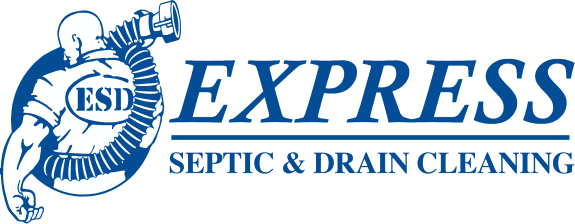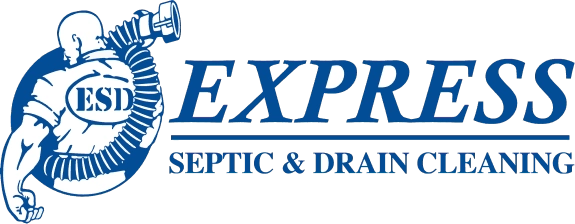In places without access to municipal sewage systems, septic systems are essential for the correct disposal of domestic wastewater. One of the numerous components that make a septic system work is bacteria, which play a vital role in how the system breaks down and treats waste. You can use this guide to learn all about the bacteria in your septic system, how they affect it and what you can do.
How Septic Systems Work
When waste enters a septic tank, it separates into three layers: scum, wastewater and sludge. The system partially cleans the water and sends it through a distribution box, which evenly distributes the partially treated effluent from the septic tank into multiple drain field lines. The purpose of having at least two drain field lines is to provide redundancy and ensure even distribution of the effluent across the drain field. This helps prevent uneven loading of the soil and promotes effective filtration and treatment of the wastewater. The septic tank and the soil rely on microbes and bacteria to function correctly.
What Are the Different Bacteria in a Septic System?
A wide variety of bacterial strains make up the septic population, and they all play an important role in the breakdown of organic materials. There are two main categories of bacteria: anaerobic and aerobic, and both are essential for decomposing solid waste and treating wastewater efficiently.
Anaerobic bacteria include obligate anaerobes and facultative anaerobes. The first steps in decomposing waste in a septic tank include the obligatory anaerobes, which flourish in oxygen-depleted settings. Facultative anaerobes thrive in environments with high or low oxygen levels, making them an essential player in the septic system at every step, from the tank all the way to the drain field.
Aerobic bacteria include aerobic decomposers and nitrogen-fixing bacteria. The drain field is the most common place to find aerobic decomposers. Before percolation into the soil, they need oxygen to decompose any residual organic matter in the treated effluent. Nitrogen-fixing bacteria are essential for converting nitrogen compounds into forms that plants can use. These microbes help maintain the drain field’s delicate ecological balance.
Are Some Bacteria Bad?
Although most septic system bacteria are beneficial, others might actually harm the system’s ability to break down waste. In order to keep the septic system running smoothly and efficiently for as long as possible, it is crucial to know which bacteria might cause problems. The presence of sulfate-reducing bacteria (SRB) in the septic system increases the likelihood of hydrogen sulfide gas generation, which in turn increases the likelihood of unpleasant smells, pipe corrosion and even system collapse. Powdered and some liquid detergents contain sodium sulfate, so check your labels and change brands if you’re having an issue.
Are Some Bacteria Good?
Even though some types of bacteria can harm the septic system, many types make the system more efficient. Bacteria that break down cellulose and other plant-based materials, like cellulose-degrading bacteria, are great for the septic tank because they speed up the breakdown process. Methane-producing bacteria are responsible for the production of methane gas during the anaerobic digestion process, making them crucial to the health of your septic system.
How Bacteria Affect the Septic Tank
Bacteria affect the septic tank in several ways. Anaerobic bacteria activity breaks down solid organic waste, including food particles, human waste and more. Various forms of bacteria also facilitate the decomposition process, separating the waste into sludge, scum or wastewater. Nutrient-transforming bacteria convert nitrogen and phosphorus, along with other nutrients, into forms that are beneficial for plant growth.
How Bacteria Affect the Drain Field
The drain field, commonly referred to as the leach field, is an additional filtering and purification step that the wastewater goes through before the system releases it into the soil. As they do in earlier stages, bacteria play an important part in the latter phases of wastewater treatment. The last step in treating wastewater before it seeps into the ground is the aerobic bacterial breakdown of any residual organic materials in the drain field. The nitrogen-fixing bacteria found in the drain field transform nitrogen compounds, allowing soil plants to absorb nitrogen. As part of their mutually beneficial interaction, the bacteria in the drain field filter and purify the effluent by interacting with the soil matrix. Inadequate bacterial activity can cause clogging, which in turn can cause system failures and costly repairs.
Best Ways to Take Care of a Septic Tank
In the septic tank, microbes toil away at decomposing organic waste, making it an essential part of these systems. If you want your septic tank to last as long as possible and work as efficiently as possible, you must maintain it correctly. From avoiding overuse of antibacterial treatments to carefully planning your landscaping around your septic tank, here’s a look at the top three ways to make your septic system healthier.
Limit the Use of Antibacterial Products
You may think that antibacterial soaps, detergents and cleaning chemicals are your best friends when it comes to keeping the house clean and germ-free. However, the chemicals in these items might disturb the delicate bacterial equilibrium in the septic tank. While antimicrobials are effective against pathogenic bacteria, they also have an adverse effect on the good bacteria that break down organic waste. Consider switching to septic-safe cleaning solutions to protect the delicate bacterial environment in your sewage system and keep it in microbial harmony.
Don’t Overload the System
Overflowing the tank with water reduces the amount of time bacteria have to break down waste. Maintaining a steady water flow through the system is as easy as addressing leaks as soon as they happen, switching to water-efficient appliances and separating your washing loads. You can do your part to keep the conditions favorable for bacteria to carry out their waste breakdown activities by minimizing water strain that isn’t absolutely essential.
Regularly Pump the System
One of the most important parts of maintaining a septic tank is pumping it regularly. This is because the solid waste gradually builds up a sludge layer at the tank’s base. Sludge like this reduces the tank’s capacity and causes problems like blockages and system failures if it isn’t cleaned regularly. Regular septic pumping, usually every three to five years, removes the built-up sludge, enabling the septic tank to work at its maximum capacity and avoiding expensive repairs. You can add anaerobic bacteria, which degrade sludge, to your system to increase the interval between pumps.
By introducing good bacteria into the tank, bacteria supplements increase the activity of natural microbes and speed up the process of breaking down solids. It is essential to follow all instructions for additive use and to choose products made for your type of septic system.
Express Septic & Drain Cleaning is here to meet all of your septic tank installation, repair and maintenance needs. We also help Caldwell, ID homeowners with enzyme treatments and drain cleaning. Give Express Septic & Drain Cleaning a call today to schedule maintenance for your septic system.



